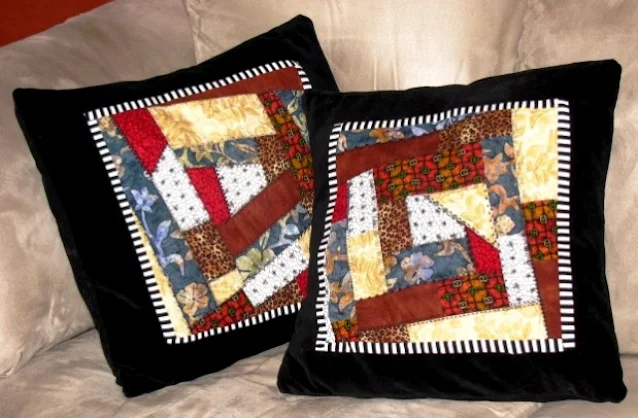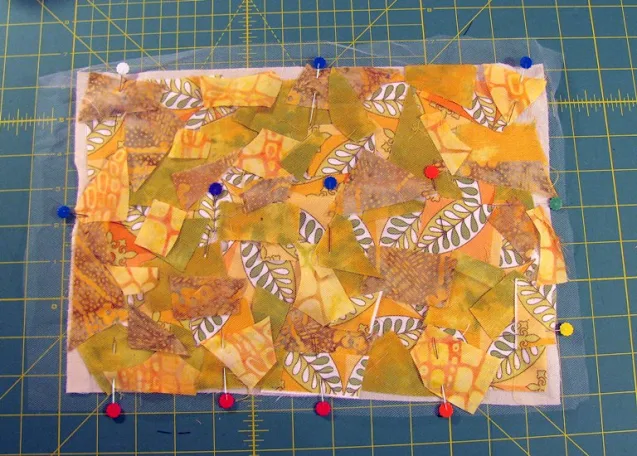I made these crazy quilt block pillows for our couch, and they really inject a bit of character into the room. I love crazy quilts but lack the patience and time for all that embroidery. So, now I use the fancy stitches on my sewing machine instead. My little Singer has the best decorative stitches, so I use that machine for crazy quilt blocks.
Below is a great tutorial by Fons & Porter for creating crazy blocks. (FYI: The quilt in the left background inspired my denim scrap quilt beach blanket.)
Below is a great tutorial by Fons & Porter for creating crazy blocks. (FYI: The quilt in the left background inspired my denim scrap quilt beach blanket.)




























